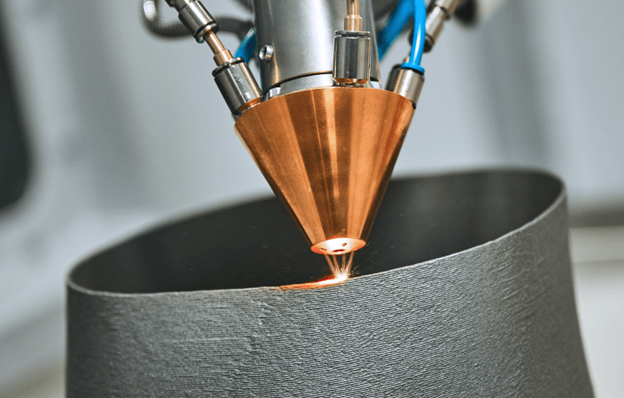Additive Manufacturing (AM)
At Raica Tejarat, we harness the potential of Additive Manufacturing to deliver innovative solutions tailored to your specific needs. Our expertise in AM technologies ensures that we can lead your projects with precision, efficiency, and excellence.
More Information
At Raica Tejarat, we harness the potential of Additive Manufacturing to deliver innovative solutions tailored to your specific needs. Our expertise in AM technologies ensures that we can lead your projects with precision, efficiency, and excellence.
Additive Manufacturing (AM), commonly known as 3D printing, is a transformative approach to industrial production that enables the creation of lighter, stronger parts and systems. It is an innovative technology that builds objects layer by layer directly from digital files, allowing for greater design flexibility, reduced material waste, and faster production times.
What is Additive Manufacturing?
Additive Manufacturing is a process of joining materials to make objects from 3D model data, usually layer upon layer, as opposed to subtractive manufacturing methodologies. It encompasses various technologies and processes, including:
1. Stereolithography (SLA)
- Uses a laser to cure liquid resin into hardened plastic in a layer-by-layer fashion.
- Ideal for producing detailed prototypes with smooth surface finishes.
2. Fused Deposition Modeling (FDM)
- Involves melting and extruding thermoplastic filament to build parts layer by layer.
- Widely used for creating durable and functional prototypes and end-use parts.
3. Selective Laser Sintering (SLS)
- Utilizes a laser to sinter powdered material, typically nylon, into solid structures.
- Suitable for producing complex geometries and durable parts without the need for support structures.
4. Digital Light Processing (DLP)
- Similar to SLA but uses a digital light projector screen to flash a single image of each layer simultaneously.
- Known for high speed and accuracy.
5. Direct Metal Laser Sintering (DMLS)
- A laser melts and fuses metal powder particles layer by layer.
- Enables the production of fully functional metal parts with complex geometries.
6. Electron Beam Melting (EBM)
- Uses an electron beam to melt and fuse metal powder.
- Effective for creating dense and strong metal parts, commonly used in aerospace and medical implants.
7. Binder Jetting
- Involves laying down a layer of powdered material and using a binder to selectively glue the particles together.
- Can produce parts in metals, ceramics, and polymers.
Applications of Additive Manufacturing
Additive Manufacturing has broad applications across various industries, including:
- Aerospace: Lightweight components, complex geometries, rapid prototyping.
- Automotive: Custom parts, tooling, lightweight structures.
- Medical and Dental: Custom implants, prosthetics, dental devices, surgical tools.
- Consumer Goods: Customized products, rapid prototyping, design freedom.
- Industrial Manufacturing: Tooling, jigs and fixtures, end-use parts.
- Architecture: Scale models, customized building components.
- Education and Research: Prototyping, research and development, teaching aids.
Benefits of Additive Manufacturing
1. Design Flexibility:
- Complex geometries and intricate details that are difficult or impossible to achieve with traditional manufacturing methods.
- Customization and personalization of products.
2. Reduced Material Waste:
- Material is added only where needed, minimizing waste.
- Efficient use of raw materials, particularly beneficial for expensive materials like titanium or specialized alloys.
3. Faster Production Times:
- Rapid prototyping allows for quicker iteration and development cycles.
- On-demand production reduces lead times and inventory costs.
4. Cost Efficiency:
- Lower tooling costs compared to traditional manufacturing.
- Cost-effective for low-volume production and prototyping.
5. Supply Chain Simplification:
- Decentralized production capabilities.
- On-demand manufacturing reduces the need for large inventories.
6. Sustainability:
- Potential for reduced environmental impact through less waste and more efficient use of materials.
- Localized production can decrease transportation emissions.


